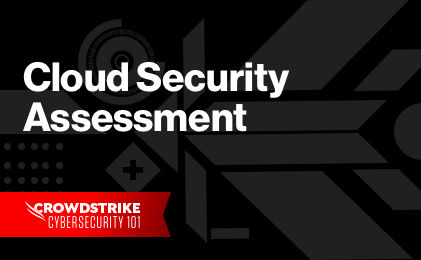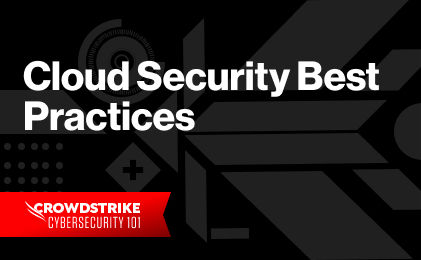What is CNAPP (cloud-native application protection platform)?
A cloud-native application protection platform (CNAPP) is an all-in-one cloud-native platform that simplifies monitoring, detecting and remediating potential cloud security threats and vulnerabilities. As an increasing number of organizations adopt DevSecOps, they are looking for ways to ensure cloud-native application security, protect business-critical workloads and streamline operations. A CNAPP combines multiple tools and capabilities into a single software solution to minimize complexity and facilitate DevOps and DevSecOps team operations. A CNAPP offers an end-to-end cloud and application security through the whole CI/CD application lifecycle, from development to production.

The Complete Guide to CNAPPs
Download CrowdStrike's Complete Guide to CNAPPs to understand why Cloud-Native Application Protection Platforms are a critical component of modern cloud security strategies and how to best integrate them to development lifecycles.
Download NowWhat problems does a CNAPP solve?
A CNAPP addresses the industry’s need for modern cloud security monitoring, posture management, breach prevention and control tools. It does so by offering enhanced visibility, quantification of risks, secure software development, and a combined cloud security solution.
1. Enhanced visibility and risk quantification
By combining multiple cloud security capabilities into a single solution, a CNAPP provides more visibility across cloud infrastructure, workloads, and applications. Increased visibility helps contextualize cloud and application risks. CNAPP solutions provide security teams the ability to quantify and respond to risks in the cloud environment.
2. Combined cloud security solution
A CNAPP is an end-to-end cloud security solution that eliminates the need to exchange information between tools. It consolidates cloud infrastructure provisioning, workload scanning and protection, entitlement management, and application and data security into a single software solution, thus minimizing human error associated with managing multiple tools while also reducing the time it takes for teams to remediate cloud security issues.
3. Secure software development
A CNAPP enables scanning and rapid response to misconfigurations. An increasing number of software development teams implement the continuous integration and delivery (CI/CD) paradigm. A CNAPP can be easily integrated into CI/CD activities to scan changes like infrastructure as code (IaC) configuration and block unsecure deployments to the cloud.

2024 Gartner® Market Guide for CNAPPs
Download Gartner's 2024 CNAPP Market Guide to learn for insights on adopting a CNAPP, including key capabilities, complementary tools, best practices, potential challenges, and representative vendors.
Download CNAPP Market Guide NowCNAPP features and capabilities
A CNAPP typically packages many tools to help scan and protect your cloud infrastructure and services. It can also be integrated into your DevOps and DevSecOps pipelines and operations to enhance cloud security for your software development activities.
The capabilities of CNAPP solutions vary by vendor, but let’s take a look at some of the most common CNAPP features.
Cloud security posture management (CSPM)
Cloud security posture management (CSPM) is a software solution designed to detect, prevent, and remediate misconfigurations which lead to exposure of cloud resources and potential security incidents. CSPM solutions also ensure that cloud resources and activities adhere to industry regulations and compliance mandates. If a resource is not compliant, security teams receive alerts to address them. CSPM not only give visibility and alerts, but also provide guided remediation or automated remediation to close security gaps and maintain golden standards and healthy security posture. A CSPM can be used for security risk analysis and monitoring, but also for incident response in case of threats. CSPM scanning in the DevOps CI/CD pipeline can also be used to ensure new IaC definitions are compliant with your cloud identity and access management policies.
Infrastructure-as-code (IaC) scanning
Infrastructure-as-code (IaC) tools allow you to define your cloud architecture and services using configuration files or actual code. Among the most popular IaC tools for configuration files are Terraform, the Serverless Framework and AWS CloudFormation. For code, the Cloud Development Kit for Terraform (CDKTF) is one of the most popular.
IaC scanning is a form of automation to minimize cloud misconfiguration risks. Similar to code review, it is a means for ensuring code quality of the cloud infrastructure configuration files created by the scanning program itself in the CI/CD pipeline phase. IaC scanning can be manually launched too, which can be useful when developing IaC code to help you verify the security of your new code, for example.
IaC scanning tools scan your configuration files (e.g., HCL files for Terraform) to find vulnerabilities and misconfigurations. They can detect issues like vulnerable network exposures, compliance violations and infringements of the principle of the least privilege for resource access policies.
Cloud workload protection platform (CWPP)
Cloud workload protection platform (CWPP) solutions help protect your cloud infrastructure workloads from security threats. This covers a wide range of workloads from your cloud provider services such as VM, database (SQL and NoSQL) or API, as well as containers and kubernetes. A CWPP detects and suggests corrections to prevent cybersecurity threats and keep production running smoothly.
Cloud service network security (CSNS)
Cloud service network security software solutions focus on protecting your cloud infrastructure in real time. This is achieved by one or many mechanisms such as a web application firewalls (WAF) or web application and API protection (WAAP), DDOS protection and load balancing, and TLS examination.
Kubernetes security posture management (KSPM)
Modern cloud infrastructure often uses Kubernetes for container orchestration to automate software deployments and to manage containers. Kubernetes security posture management (KSMP) tools help DevOps engineers manage Kubernetes activities. They offer:
- Scanning of the Kubernetes environment and configurations to find and report on misconfiguration and security issues
- Monitoring the environment, workload, configuration, clusters and more in order to minimize user errors
- Cluster penetration testing
- Benchmarking
Cloud infrastructure entitlement management (CIEM)
Cloud infrastructure entitlement management (CIEM) helps you manage permissions and rights across your cloud environment, including across multi-cloud setups. It typically enforces the principle of least privilege and scans your cloud infrastructure configuration to find unnecessary access to resources to report them. It can also detect and report other misconfigurations such as a user or role having access to all actions on a resource when only read access is needed.
Application security posture management (ASPM)
Application security posture management (ASPM) helps make applications secure and resilient once deployed. ASPM applies essential context from environment variables and configurations that can only be identified in production. This added context helps determine whether specific code vulnerabilities or application misconfigurations are exploitable.
Data security posture management (DSPM)
Data security posture management (DSPM) solves the challenge of keeping all data safe, acting as a watchdog over where your data lives, how it’s secured, and who accesses it. Some key functionalities DSPM has include helping organizations manage their data across the cloud, monitoring for risks, enforcing security policies, and ensuring regulatory compliance.
Cloud Detection and Response (CDR)
Cloud Detection and Response (CDR) is an approach specifically designed to solve challenges pertaining to cloud computing environments, such as scalability, data sovereignty, and innovation. It does so by continuously monitoring the environment for any cloud threats, and rapidly respond to incidents or suspicious activity to limit its impact.
Integration to software development activities
Cloud-native application protection platforms should be used not only for production operations but also within the scope of software development in order to increase reliability and testing in the CI/CD pipeline phase. A CNAPP can detect and prevent cloud infrastructure issues (as noted above in relation to IaC scanning) and run another type of static analysis such as the scanning done by ASPM, KSPM or CSPM.
CNAPP Benefits
CNAPPs help organizations with their cloud-native application security in a number of ways. Some benefits include:
- Prevents cybersecurity threats by decreasing the number of cloud misconfigurations.
- Automates security-related tasks, reducing human error and improving reliability.
- Provides combined and unique visibility of risks and accurate information, allowing for rapid response to threats and driving decision-making.
- Reduces complexity and overhead by eliminating the need to run and maintain multiple cloud security tools.
- Increases developer and DevOps team productivity by identifying misconfigurations and potential threats in the CI/CD pipeline phases, thus reducing the number of bug fixes and merge/pull requests.
Learn More
Read this blog post and learn how CrowdStrike is defining the future of cloud-native application protection platforms (CNAPP) with CrowdStrike Falcon® Cloud Security.
Blog: How Falcon Cloud Security Delivers the Future of CNAPP
CrowdStrike’s approach
A CNAPP is a comprehensive tool offering DevOps and DevSecOps teams a unified security posture across all cloud infrastructure, workloads and applications. It can be used across private, public, hybrid and multi-cloud environments. CNAPP also automates tasks to reduce misconfigurations, errors, and threats while improving productivity and response times when vulnerabilities are discovered.
CrowdStrike is the most complete CNAPP available on the market, offering complete code to cloud security. CrowdStrike was recently recognized as a Leader in Frost & Sullivan’s inaugural Frost Radar: Cloud-Native Application Protection Platforms, 2023 report, stating “one of the fastest growing CNAPP vendors … growing significantly faster than the market average” with “protection from endpoint to cloud with excellent support, which sets CrowdStrike apart from competitors.”
Cloud-Native Application Protection Platform (CNAPP) FAQs
Q: What is a CNAPP?
A: A Cloud-Native Application Protection Platform (CNAPP) integrates security tools to protect cloud-native applications from threats.
Q: What is a cloud-native application protection platform?
A: CNAPP combines multiple security capabilities, including workload protection, compliance enforcement, and runtime security.
Q: Who needs CNAPP?
A: Organizations running cloud-native applications benefit from CNAPP solutions to secure workloads and maintain compliance..
Q: What is the difference between CNAPP and CASB?
A: CNAPP provides broad security for cloud applications, while Cloud Access Security Brokers (CASB) focus on controlling access to cloud services.
Q: What is the difference between CNAPP and SASE?
A: CNAPP secures workloads and applications, whereas Secure Access Service Edge (SASE) focuses on network security and access control.







